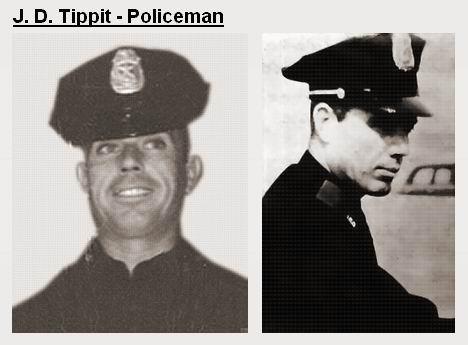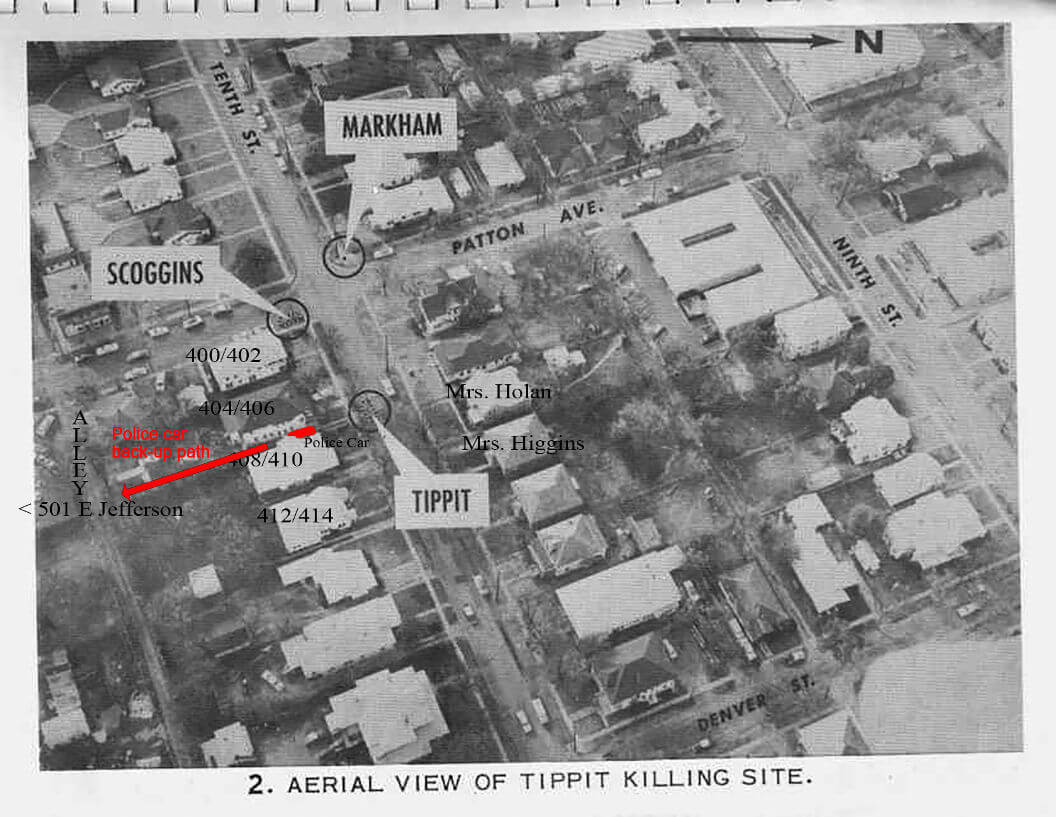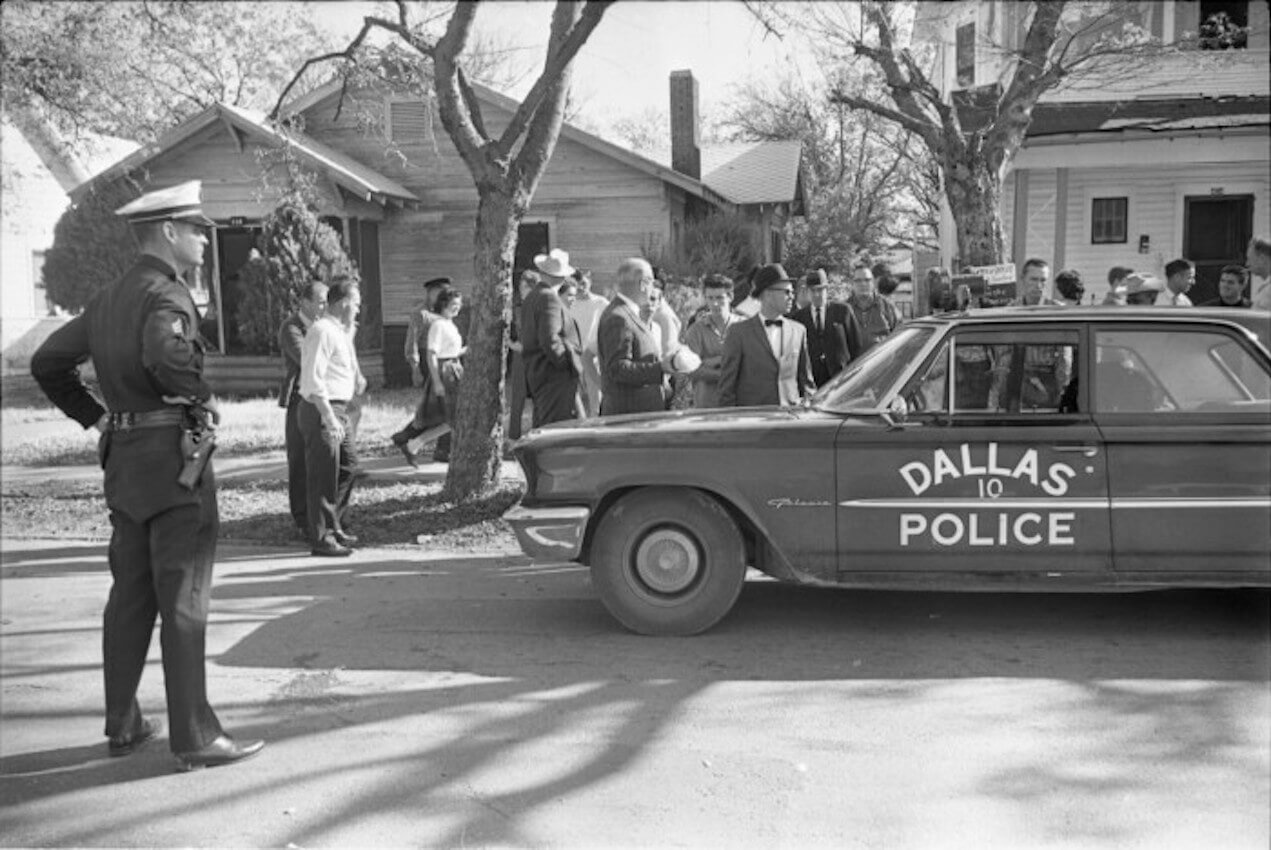 |
| Original black and white photographic negative taken by Dallas Times Herald and United Press International photographer Darryl Heikes. |
Up until the earthquake caused by Oliver Stone’s film JFK, there was an accepted paradigm in the critical community regarding the murder of Dallas Police patrolman J. D. Tippit. Two good examples of what that case looked like under critical scrutiny could be accessed in Henry Hurt’s book Reasonable Doubt, and Jim Garrison’s memoir, On the Trail of the Assassins. The former was published in 1985, and the latter in 1988. Garrison asked some cogent questions about the ballistics evidence in the case, which, in turn, cast aspersions on the honesty and efficacy of the handling of the evidence.
As Garrison wrote, the Warren Commission version of the Tippit shooting said that Oswald alone killed Tippit at about 1: 15 PM. After President Kennedy’s assassination, Oswald departed work at the Texas School Book Depository and took a taxi to his boarding house. The official story then has Oswald walking to the crime scene at 10th and Patton from his rooming house at 1026 North Beckley in the Oak Cliff area of Dallas, a distance of around 9/10 of a mile. In itself, as both Hurt and Garrison noted, this created a problem. It began with Oswald’s landlady testifying that she had seen him standing on the corner across the street from the rooming house waiting for a bus after he went into his room at about 1:00 PM. When asked what time she saw him there—waiting for a bus that would take him in the wrong direction from 10th and Patton—she replied it was about 1:04. (Garrison, p. 194; Hurt p. 144) The idea that someone could traverse the nearly one mile distance from the rooming house to the crime scene in something like 11 minutes is hard to swallow. I know two researchers—both of them much taller than Oswald—who tried to negotiate that distance and actually walked the route. Neither of them came close to equaling what the Commission said Oswald did. And neither of them walked normally; they both power-walked the distance. As Henry Hurt added, no one saw Oswald running that distance, or walking for that matter. Recall, this is about a half hour after President Kennedy’s assassination. If Oswald had been running, wouldn’t someone have noticed him? (Hurt, p. 145)
But, as both Garrison and Hurt showed, the idea that Tippit was shot at the 1:15 PM time is not supported by the weight of the evidence. For instance, Mrs. Donald Higgins was later interviewed by Barry Ernest for his book, The Girl on the Stairs. She told Barry that the time of the shooting was 1:06. And she lived only a couple of doors down from the crime scene. (See the e-book version, p. 58.) Roger Craig said that, when the news of the shooting came over the radio, he looked at his watch, which said 1:06. (Garrison, p. 194) Even Helen Markham, who became hysterical after the shooting, said Tippit was shot at the latest about about 1:07 PM. (Hurt, p. 144) As Hurt notes, T. F. Bowley came on the scene after the shooting, with Tippit’s body lying in the street. He had to stop his car, and then walked over to the abandoned Tippit car, and he then picked up the radio. He said that the time on his watch after he arrived at the scene and stopped his car was 1:10. It is important to hold in mind that the Warren Commission did not interview either Mrs. Higgins or Mr. Bowley. (Garrison, p. 196) In fact, the Warren Report actually says that another witness, Domingo Benavides, made the call to the police that Bowley actually made. (WR, p. 166) The late Larry Ray Harris was probably the foremost authority on the Tippit case at the time of his death in a car accident in 1996. When I spoke to him at an earlier seminar in Dallas, he told me that the most likely time of the shooting was probably 1:08 PM.
This, of course, is a key evidentiary point. Because if it is hard to believe that Oswald was at the scene at 1:15, it is not possible to think he could be there at 1:08 PM—that is, unless someone drove him there, and no evidence of that has surfaced in over fifty years. Consider this fact: Just 9 years earlier Roger Bannister became the first man to run the mile in less than four minutes. The idea that Oswald could do something similar—in street clothes, on cement sidewalks—and that no one would recall him doing so, that would be absurd. I doubt if even Dan Rather could have swallowed it. This may be the reason that Bowley and Higgins were not interviewed.
But the riddle of the time of death is even more complex. Because the legal death certificate document pronounced Tippit dead at 1:15. This was done by Dr. Richard Liquori at Methodist Hospital.
 |
| Tippit death certificate (note the time of decease 1:15 pm typed over what appears originally to be 1:09) |
If one allows for the time for the ambulance to get to the scene of the crime and return, this would appear to back up Mrs. Higgins’ claim that the shooting occurred at 1:06 PM.
What made the situation worse was this: the witness who was closest to the actual shooting scene could not identify Oswald as the shooter. This was Domingo Benavides. (Hurt, p. 145) This is compounded by the fact that the Dallas Police never even took Benavides to a lineup in order to identify Oswald. (WR, p. 166)
Warren Reynolds was also an eyewitness. He also could not identify Oswald as the killer. He worked about a block away from the scene. When he heard the shots, he ran out on a patio and peered in that direction. He said he saw a gunman running towards him stuffing a handgun under his belt. He began to follow him, but after a block, he lost him when he ducked into a building. Reynolds gave interviews to the press and his name was in the news for about two months. Yet no official investigator talked to him in this time period. Finally, in late January, the FBI interviewed Reynolds. He said he could not feel free to offer a positive identification of the man as Oswald. Two days later, Reynolds was shot through the head. He miraculously survived. Evidently, the down time did his memory some good. He now was ready to identify the fleeing man as Oswald. (Hurt, pp. 147-48)
With these kinds of witnesses, the Commission felt they had to rely upon Helen Markham for probative value. (Sylvia Meagher, Accessories After the Fact, p. 256) At this point in time, I do not think it is necessary to pile on this poor woman. But what I would like to accentuate here is the following fact: the Warren Commission understood what a liability she was to their case, before they published. They used her anyway. At a public debate in Los Angeles in 1964, Commission lawyer Joe Ball characterized her testimony as full of errors and called her an “utter screwball”. (Anthony Summers, Conspiracy, p. 87). Neither Ball nor fellow lawyer Wesley Liebeler wanted to use her in the first place. Liebeler labeled her testimony with the ultimate insult. He called it “worthless”. (Edward Epstein, The Assassination Chronicles, pp. 142-43) The men doing the heavy lifting in the trenches were clearly overruled from above.
Why did the Warren Commission overrule their own working lawyers and decide to make Markham the chief witness in the Tippit case? One problem was that a witness they billed as being a direct eyewitness to the crime was not. This was taxi driver William Scoggins who had his view of the shooting obstructed by hedges. (Joseph McBride, Into the Nightmare, p. 455) When Scoggins was shown a few pictures of Oswald, he narrowed it down to two. He then picked the wrong one. (WC 3, p. 335) Another problem was that his identification took place during the infamous Dallas Police lineups. Scoggins was at the same lineup as another cab driver, William Whaley. Whaley said about this proceeding: “You could have picked Oswald out without identifying him, by just listening to him because he was bawling out the policemen, telling them it wasn’t right to put him in line with these teenagers.” Whaley continued by saying Oswald told the police they were trying to railroad him and he wanted his lawyer. Whaley concluded, “Anybody who wasn’t sure could have picked out the right one just for that.” But further, when asked their names and occupations, the others in the lineup—who were policemen—gave fictitious answers. Oswald said his true name and that he worked at the Texas School Book Depository. (Meagher, p. 257)
Another witness who said he saw Oswald fleeing the scene was Ted Callaway. The problem with his testimony is that Benavides worked for him at a car lot. Callaway asked Benavides if he saw the man escaping. Benavides said he did. Before he took off looking for him, Callaway asked his employee: Which way did he go? As Meagher asks, is not Callaway’s testimony therefore paradoxical? Why did he have to ask his employee where the guy went if he already saw him? (Meagher, p. 258) In addition to that, before Callaway viewed the lineup, he was given some input by Leavelle. He was told that the police wanted to wrap up the Tippit case real tight since they thought the man who killed Tippit also killed Kennedy. (Joseph McBride, Into the Nightmare, p. 474) As Hurt points out, time after time, witnesses to a man fleeing the scene were not questioned until late January. And at that late date they were only shown one photograph: Oswald’s. (Hurt, p. 147) This was two months after the media had begun its daily pounding of the public consciousness with the idea that Oswald was Kennedy’s killer. (As we shall see, the FBI went even further in this case in its violations of investigative protocol.)
II
The ballistics evidence in the Tippit case is also a morass. First of all, there is the enigmatic message sent out over the police radio by the ubiquitous Sgt. Jerry Hill. A message Hill actually tried to deny before the Warren Commission but which he admitted to decades later. Further, Hill once told a writer that the shells were arrayed within a hand towel of each other. Such was not the case, since they were recovered yards apart from each other. (See Bill Simpich, “Jerry Hill’s Lies: The Heart of the J. D. Tippit Shooting,” 3/12/16)
Hill reported that one of the shells at the scene indicated “that the suspect is armed with an automatic .38 rather than a pistol.” This was shortly after another Dallas cop described the man escaping the scene—who did not match Oswald’s description—as being armed with an automatic. (Garrison, p. 198) Michael Griffith wrote in a review of Dale Myer's book about the Tippit case that, in 1986, Hill admitted he had picked up one of the casings for examination This is important because the shells are marked with ‘.38 AUTO’ at the base. And Hill said he specifically looked on the bottom.
As Garrison went on to explain, an automatic is clip loaded from its handle and its spring action ejects cartridge cases from the spent round. A revolver keeps the cartridge shells in the chamber as the turret rotates to the next round. As several authors have shown, including Garrison, it is hard to believe that experienced policemen could mistake an automatic handgun and ammo for a revolver. (For a telling visual presentation of this key point, see Robert Groden’s book Absolute Proof, p. 298) Especially since the Dallas police used .38 Special ammo and the shells were marked at the bottom. (see again Simpich, “Jerry Hill’s Lies”) This is an important point to recall as we progress through the ballistics evidence, and later, the issue of possession of the weapon.
Of the bullets taken from Tippit’s body, three are Winchester Western manufactured and copper-coated. The last is a lead bullet made by Remington-Peters. As Garrison noted, this seemed to suggest that two men might have fired at Tippit. (Garrison, p. 199) But further, the shells did not match the bullets. Two of the shells were made by Remington and two by Winchester. (Garrison, p. 201) This has led some to think that perhaps there was a shot that missed and a shell that was not recovered. The House Select Committee on Assassination suggested this but labeled it as speculation. (McBride, p. 256)
But the automatic/revolver dispute and the mismatching of the manufacturers and the ammo is only the beginning of the problems with the ballistics evidence. On the day of the shooting, the police made out an inventory of the evidence found at the scene. There was no mention of cartridge cases of any kind. (Garrison, p. 200) Moreover, it is also standard police procedure to send the bullets and shells to the FBI lab the day of the crime to have them identified and matched to the weapon. In the Tippit case, the authorities sent only one bullet to the Bureau. The police said this was the only projectile recovered from the victim’s body. (Joseph McBride, Into the Nightmare, p. 244) The FBI could not match this bullet to the weapon allegedly taken from Oswald later at the Texas Theater. And further, that bullet was described by the FBI as “so badly mutilated that there is not sufficient individual microscopic characteristics present for identification purposes.” (WC 24, p. 263)
There was a complicating factor to this issue. As Henry Hurt explained in Reasonable Doubt, and John Armstrong amplified on in Harvey and Lee, the Smith and Wesson .38 revolver in evidence had been altered by its purchaser George Rose and Company, located in Los Angeles. The company sent 500 of these guns to its gunsmith in Van Nuys, California. Among the modifications made were the re-chambering of the cylinder so the weapon could accommodate a .38 Special cartridge. This altered chamber made for a slight slippage upon firing and thus did not allow the usual markings to be placed on the bullet. (Armstrong, p. 482; Hurt, p. 143)
When they could not get a match on the first bullet, in March of 1964, the Commission sent FBI technician Cortlandt Cunningham to Dallas to find the other bullets. The police said they had misfiled them. But they turned up in the dead files, a point that the Commission tried to paper over. (McBride, p. 254) Predictably, four months later, the same thing happened: the bullets did not match. (Garrison, p. 199)
Thus, the emphasis was now on the shells. It was not until six days after the police sent the first bullet to the FBI that they finally marked the evidence inventory sheet with four shells. These the FBI were able to match to the weapon. The delay in getting the shells on the inventory list and the failure to send all the ammunition exhibits promptly to the FBI has led some to suspect that the police fiddled with the evidence—to the extent that it suggests that the original weapon perhaps really was an automatic. This is not at all a critic’s meandering speculation. Warren Commissioner Hale Boggs himself expressed similar reservations about the delay. Boggs asked Commission counsel Melvin Eisenberg, “What proof do you have though that these are the bullets?” (McBride, p. 258)
But even that is not the end to the problems with the Tippit ballistics. Benavides had found two cartridge cases at the scene. He handed them to Officer J. M . Poe. Hill told Poe to mark the shells with his initials. His marks were not evident when the policeman inspected the exhibits for the Commission. (Hurt, pp. 153-54) Further, when the witnesses who found the other two shells were asked by the FBI to identify them as the ones they originally recovered, they could not. (WC 24, p. 414)
One would think it could not get any worse. But, in the JFK case, it usually does. When McBride interviewed Detective Jim Leavelle in 1992, the crusty old cop tried to put the whole issue of police identification to rest by throwing a giant curveball at it. He now said that neither Poe, nor the man Poe gave the shells to, Sgt. Barnes, ever marked the cartridge cases at all. (McBride, p. 256) Consider the ramifications of this charge. First, Poe is now a liar. But by labeling him as such, it attempts to rid the Dallas Police of the substitution of evidence accusation. What it really does, however, as McBride notes—as if it had not been done already—is it makes the whole “chain of custody on the shells highly suspect.” (McBride, p. 256)
III
As noted above, Jim Garrison came to suspect that there were probably two assailants. His judgment relied on the mismatching ballistics and the testimony of witnesses not in the Warren Commission.
Acquilla Clemmons worked as a caretaker for an elderly woman on the next block. She ran down the street after she heard the shots. She saw two men, one with a gun. The gunman was “kinda chunky, he was kinda heavy, he wasn’t a very big man. He was a kinda short guy.” (McBride, p. 492) The gunman’s accomplice, who was tall and thin, then waved at the shooter and told him to “go on.” The two men left the scene heading in different directions. Two days after the shooting, a man Clemmons thought was from the DPD visited her and told her she should not talk about what she saw. If she did, she might get hurt. So when a reporter visited her with a camera, she refused the interview. After giving a long and filmed interview to Mark Lane in 1966, Clemmons apparently disappeared. (McBride, p. 492) It seems clear from looking at who was brought before the Commission and who was not that, as Jim Garrison pointed out, the Warren Commission had an agenda as to who they would and would not hear. (Garrison, p. 197) In fact, after Garrison was interviewed for Playboy, an anonymous writer mailed in a letter that was printed in the January 1968 issue. He said that, like Clemmons, he had seen two men shoot Tippit and they both ran off in different directions. Neither man was Oswald. (p. 11)
As if the witness censorship and the oddities with the ballistics evidence were not suspect enough, let us now turn to the radio transcripts. As most of us know, there were three versions of the radio messages that were eventually delivered to the Warren Commission. Sylvia Meagher pointed out that the first transcript the police turned over did not include what was perhaps the most important instruction given to Tippit that day. That was the order for him to move into central Oak Cliff at 12:45 PM. (Meagher, p. 260) This was about 15 minutes after President Kennedy was killed. But as has been noted by others, this order created some serious evidentiary problems. First, there were three DPD witnesses the Commission had already heard from on the issue of Tippit’s location. They were at a loss to explain why Tippit was in Oak Cliff, about four miles out of his area. None of them proffered this order at 12:45 as the reason for it. (Meagher, p. 261) Second, just prior to this message, the dispatcher had said, “Attention all squads, report to downtown area Code 3 to Elm and Houston with caution.” (WCE 705, p. 397) Which, of course, makes perfect sense. (The police tried to disguise this order in the first transcript, but the FBI actually listened to the tapes and this was their accurate transcription. Police Chief Jesse Curry confirmed this in a letter to the Warren Commission, see WCD 1259, p. 3)
In fact, one can reverse the question for effect: Why at this time would the police detail anyone to any location except Dealey Plaza? Further, why would the dispatcher take the time to give out such a superfluous order in the immediate wake of the tumult that followed the biggest crime ever committed in the history of the city? Yet the Commission accepted this since it was one way to explain the fact that Tippit was out of his assigned territory at the time he was shot. (Hurt, p. 161) And, one might add, what on earth was so important about central Oak Cliff? No one had radioed in any disturbance in the area.
But that does not end the controversy. On the transcripts, there is no acknowledgement of this order, even though it was given to two men, Tippit and R. C. Nelson. (WCE 1974, p. 26) What’s more, the police already had a man in Oak Cliff. His name was William Mentzel. (McBride, p. 427) In other words, at a time when cars were being directed from the outermost areas to Elm and Houston for Kennedy’s assassination, not one, but two cars are being directed to Oak Cliff—when there is already a patrol car there. And, in fact, the dispatcher does not try and contact Mentzel to check on his location before he sends in two other cars.
But that is not the capper about this order. The capper, at least for me, is that Nelson did not head to Oak Cliff. He went to Dealey Plaza. As Henry Hurt noted, there was nothing said about this apparent discrepancy by the Commission; indeed, neither the Warren Commission, nor the House Select Committee on Assassinations, called Nelson as a witness. (Hurt, p. 162)
At 12: 54, Tippit stated he was at Lancaster and 8th. The dispatcher replied with—considering what had happened and what was about to happen—one of the strangest police radio instructions imaginable. Murray Jackson told Tippit to, “Be at large for any emergency that comes in.” (Meagher, p. 263) As we will see, what makes this exchange even more notable is that Tippit might not have been at Lancaster and 8th.
We now come to the message at 1:08. Between 12:45 and that time there were four messages involving Tippit. Three went from the dispatcher to the patrolman and one allegedly came in from Tippit; this was at 1:08. In one version of the messages, Tippit called the dispatcher twice and got no answer. In the FBI version, Tippit’s call number at that time, 78, is missing: the message is assigned to No. 488. The FBI notes the sound is garbled and No. 488 is not identified by his name, and there is no other message that is assigned to whoever this person is. Tippit researcher Bill Drenas, who wrote an interesting essay, “Car #10 Where are You?”, did a thorough examination of the tape and transcripts. He concluded that the voice is not Tippit’s either. But he disagrees with who the real caller is. He says it is call number 388. Which would be from the Criminal Investigative Division.
From this perspective, Mrs. Higgins’ time for the shooting, 1:06, may be correct. If that is so, then the other salient point she told Barry Ernest is also relevant. Higgins said that after the shots rang out, she went out to her porch. She saw a man fleeing the scene. It was not Oswald. (James DiEugenio, Reclaiming Parkland, p. 125)
IV
The above is the author’s attempt to present a précis of what the evidence in the Tippit case consisted of in the early nineties. For after the tsunami caused by Stone’s JFK, the calculus of the Tippit case was altered.
The first tremor occurred in 1995 when Dallas FBI agent James Hosty published his book on the Kennedy case entitled Assignment Oswald. In that book he revealed a stunning piece of information, one that had been concealed for 32 years. Hosty wrote that his FBI colleague Bob Barrett had told him something unusual occurred at the scene of the Tippit murder. Barrett told him that one of the policemen, Captain Westbrook, asked him if he had ever heard of a Lee Harvey Oswald. When Barrett said he had not, he then asked him: How about an Alek Hidell? Again, Barrett replied he had not. As Barrett was answering the questions, Westbrook was leafing through a wallet found at the scene.
This extraordinary development was raised from the realm of memory into that of fact when a film from TV station WFAA was later uncovered. That film shows three policemen handling the wallet at the scene of the Tippit murder.
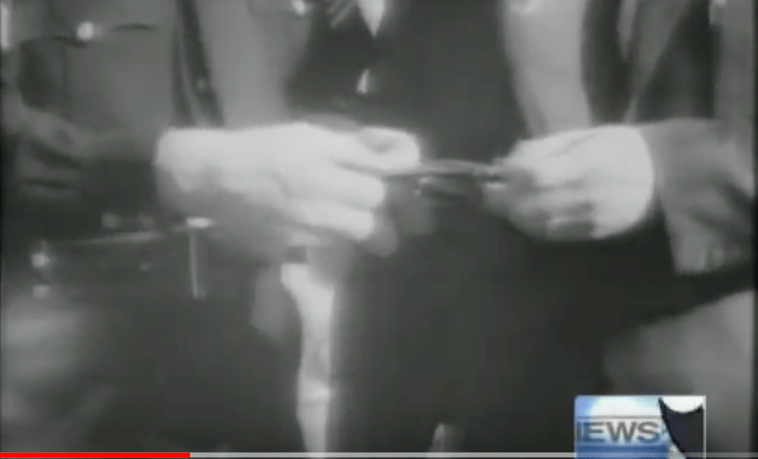 | 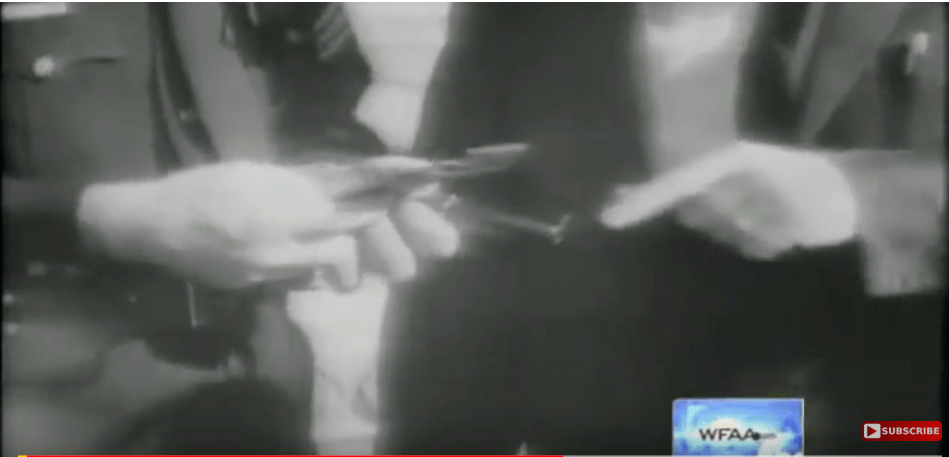 |
WFAA footage of police handling wallet
These images were captured at 01:24 and 02:50 of this ABC news feature from 2013.
This reinforcement drove diehard defenders of the official story into overdrive in a mad attempt to camouflage the damage it did. For the question now became: Who carries three wallets? The Warren Report has Oswald’s wallet being taken from him in the police car after he was apprehended at the Texas Theater. The report also says Oswald left a wallet at the home of Ruth and Michael Paine, where his wife Marina was staying, that morning. (DiEugenio, p. 126) The late Vincent Bugliosi tried to squirm out of the dilemma by saying the wallet was most likely Tippit’s. This explanation is effectively neutered since three Dallas police officers were sent to Methodist Hospital to recover Tippit’s effects at 2:00 PM. They delivered them to the station at 3:25. Among the artifacts was Tippit’s wallet. (DiEugenio, p. 126) But, even further, at a JFK Lancer seminar several years ago, intrepid researcher Martha Moyer told this author that she had talked to another officer at the scene, patrolman Leonard Jez. He told her not to let anyone bamboozle her: it was Oswald’s wallet.
The implication of the wallet at the crime scene would be that someone dropped it there in order to implicate Oswald. Beyond that, since the official story had Oswald ordering a handgun and rifle in the name of Alex Hidell, it would demonstrate he ordered the weapons and then used them to kill both policeman Tippit and President Kennedy. But from that hypothesis extends another problem. According to researchers John Armstrong and Bill Simpich, no one ever saw the wallet on the ground. The best estimates are that the film of the wallet being shown to others was taken at about 1:30-1:40 PM. With the ambulance arriving and departing, with patrol cars there, with so many bystanders on hand by that time, how could so many people have missed the wallet on the pavement? And in point of fact, some of the witnesses actually said there was no wallet on the ground. (See Bill Simpich, “Who Found Oswald’s Wallet,” 4/21/14)
Therefore, under examination, this new evidence seems to indicate the possibility that someone brought the billfold to the scene. That idea now focused attention on three people who had been more or less ignored prior to the discovery of the WFAA film. Those three are Westbrook, reserve officer Kenneth Croy and witness Doris Holan.
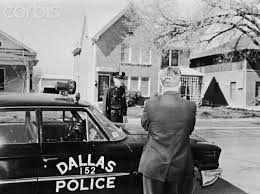 |
| 409 10th Street, where Doris Holan resided at the time of the shooting |
Holan was never called by the Warren Commission. Nor is there any evidence she was ever interviewed by either the Dallas Police or the FBI. Like many important witnesses in the JFK assassination, she was discovered by private citizens many years after the fact. Local Dallas researchers Bill Pulte and Michael Brownlow were the first to talk to her. Which is weird since she lived only one door down from the crime scene, at 409 10th Street, on the second floor. This placed her in a perfect position to see what she was about to disclose. The most remarkable information to come to the fore in the two interviews she granted was this: As she looked out her window upon hearing the shots, she saw a second police car at the scene. It was in the driveway between 404 and 410 East Tenth. This was adjacent to the spot on the street where Tippit’s car stopped. Knowingly or unknowingly, Tippit had blocked the driveway, which led to an alley at mid-block. She said a man got out of the car, looked at Tippit’s body and then went back down the driveway. He was alongside the car, which was retreating back toward the alley. She also saw a man fleeing the scene in a different direction. (McBride, pp. 494-95)
Brownlow had previously found a second witness to the police car. This was Sam Guinyard, a porter at a used car lot at 501 East Jefferson. And as McBride further notes in his book-length study of the Tippit case, Virginia Davis had said that when she heard the shots and ran out, the police were already there. Years before he talked to Holan, another witness who wished to remain anonymous related to Pulte that he had been told there was a man in the driveway who approached Tippit. (see Harrison Livingstone, The Radical Right and the Murder of President Kennedy, p. 348)
Diagram courtesy of David Josephs
To my knowledge, the Holan testimony made its first appearance in book form in the 2006 Livingstone reference just cited. This was late but fortunate, since Holan had passed on in the year 2000. Holan’s revelation opened up a new vista for the Tippit case. Now writers began to focus on Westbrook and Croy, since Croy was the first known person to handle the wallet and Westbrook was the last. Of course, the Warren Commission did no inquiry into the existence of the Oswald wallet at 10th and Patton, even though there was a film available. And, as mentioned, they were oblivious to Holan. But, in retrospect, there were still some notable things to be garnered from the Commission testimony of both William Westbrook and Kenneth Croy.
V
The first is that neither man was a detective or a patrolman. Yet both were at the scene of the Tippit murder quite quickly. In fact, Croy was reportedly the first man there. Westbrook was the chief of the personnel department. (WC 7, p. 110) That is, he handled background inquiries for applications and investigated complaints. He did not even wear a uniform. On the day of the assassination, Westbrook sent his men to the Texas School Book Depository. After the office was empty and he was the only one there, Westbrook told the Commission he got antsy, so—and he fittingly prefaced the following with “believe it or not”—he decided to walk to the Depository alone. He also added that, even though he had a radio, he would stop occasionally to get an update on a transistor radio from groups of people standing on the sidewalk. The distance between the police station and the depository is about one mile. If one adds in the stopping to listen to civilians with radios, one could say that Westbrook’s unaccounted time here could amount to as much as 20 minutes or more.
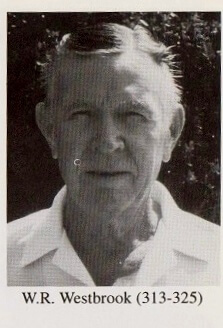 |
| Capt. William Ralph Westbrook |
Westbrook testified that while he was at the depository, he heard someone say an officer had been shot in Oak Cliff. He felt —and again this may also be hard to swallow—that since he was in personnel he should investigate the homicide. (WC 7, p. 111) Although Westbrook mentioned Barrett in his Commission testimony, he never noted the wallet he questioned the FBI agent about. Strangely, Barrett did not appear before the Commission.
While at the scene of the Tippit murder, Westbrook said the word about a suspect at the Texas Theater came over the radio. So Westbrook got a ride to the theater with another officer and Barrett. Almost immediately upon arrival there someone tipped him off as to where the suspect was sitting. Westbrook witnessed his arrest and directed he be escorted out of the theater and to the station. (WC 7, p. 113) Westbrook said that after this he went back to his desk at personnel.
In other words, it was all in a personnel officer’s workday. Thanks to being bored at his personnel desk, Westbrook became one of the few officers who showed up at the depository, the Tippit murder scene and the Texas Theater. But this does not actually do his busy day justice. As former British detective Ian Griggs has noted, Westbrook is also credited with finding the Tippit killer’s jacket and going to a nearby library to investigate a false alarm about the assailant being there. (Ian Griggs, No Case to Answer, p. 131-32) As Griggs points out, although he is credited with finding the jacket, Westbrook actually denied he did so. He said some other policeman gave it to him—but he cannot recall his name. Further, he did not place the discovery of the jacket on the report he gave to the Commission. Attorney Joseph Ball had to ask him, “Did you ever find something?” (WC Vol. 7, p. 115) Westbrook immediately said he did not find it; some other officer did.
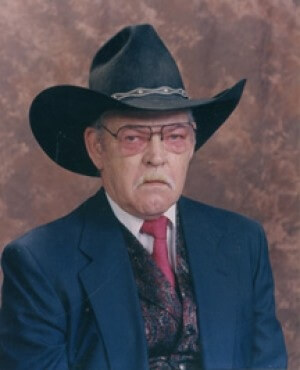 |
| Kenneth Croy |
That declaration of not knowing who gave an officer an important piece of evidence applies to Croy also. But before getting to that point, we should, as we did with Westbrook, review Croy’s Warren Commission testimony. And we should keep in mind that, as with Westbrook, the Commission never challenged Croy, nor tried to corroborate what he said.
First of all, Croy was not a regular officer. He was a reserve officer. He drove patrol car duty perhaps once a month. (WC 12, p. 195) On the day of the assassination, Croy said he was just off of Main street when he heard President Kennedy was shot.
Croy was just a few blocks from Dealey Plaza at this time. He then said that he drove to the nearby courthouse to see if the police might need some help. (WC 12, p. 200) Considering the circumstances, it is hard to believe that Croy had to ask this question, or that the police would say no if he did. But Croy said he could not recall whom he asked, and Commission counsel Burt Griffin did not probe the answer to Croy’s question on November 22, 1963. Croy added that, amid all the tumult going on a few blocks away, he decided to go home. He then said that he heard a call about an officer being shot.
As the reader can see, there really is no way so far to corroborate Croy’s whereabouts from the time of the assassination to the time of him arriving at the scene of the Tippit shooting. And Croy insisted he was the first policeman there. (WC 12, p. 201) From his description, once he was there, he talked to Helen Markham. But as Griffin questioned him about his discussion with Markham, a surprising admission came into the record. Croy claimed he did not file a report on his activities that day. Once Griffin elicited this piece of information, he just passed it by, making no comment or inquiry about it. Which is remarkable considering Croy’s insistence he was the first officer at the scene.
Croy stated he was at 10th and Patton for approximately 30 minutes, perhaps a bit more. (WC 12, p. 202) When Griffin asked him what he did after he left, Croy answered that he went to get something to eat. He also said he stayed home the rest of the day. Again, Griffin let this pass. There was no question as to why Croy did not go to the station to pen a written report or give an oral report. When Griffin asked Croy if there were any officers at the scene that he knew, Croy replied in a curious way: “There were several officers there that I knew. I don’t know their names.” (WC 12, p. 203) He went on to say that he only knew them by sight. In other words, we are led to believe that even if Croy had written a report he would not have been able to relate it to any other officer.
As Croy left 10th and Patton, he said he drove near the Texas Theater and saw squad cars around the building. He decided not to stop since he felt the situation was well in hand. After first telling Griffin he was going to get something to eat and go home, he then said that he actually met his estranged wife at Austin’s Barbecue. (WC 12, p. 205) And this is where Croy’s story gets even more retroactively bizarre. He now added that right after Kennedy’s assassination, the cops he did talk to told him he was not needed. The wife from who he was separated happened to drive up next to him and he asked her if she wanted to get something to eat. Consider this fact: Croy was in uniform. He was just off Dealey Plaza; sirens, and scores of policemen are pouring into the area; searches are being organized of the depository building and the area behind the picket fence.
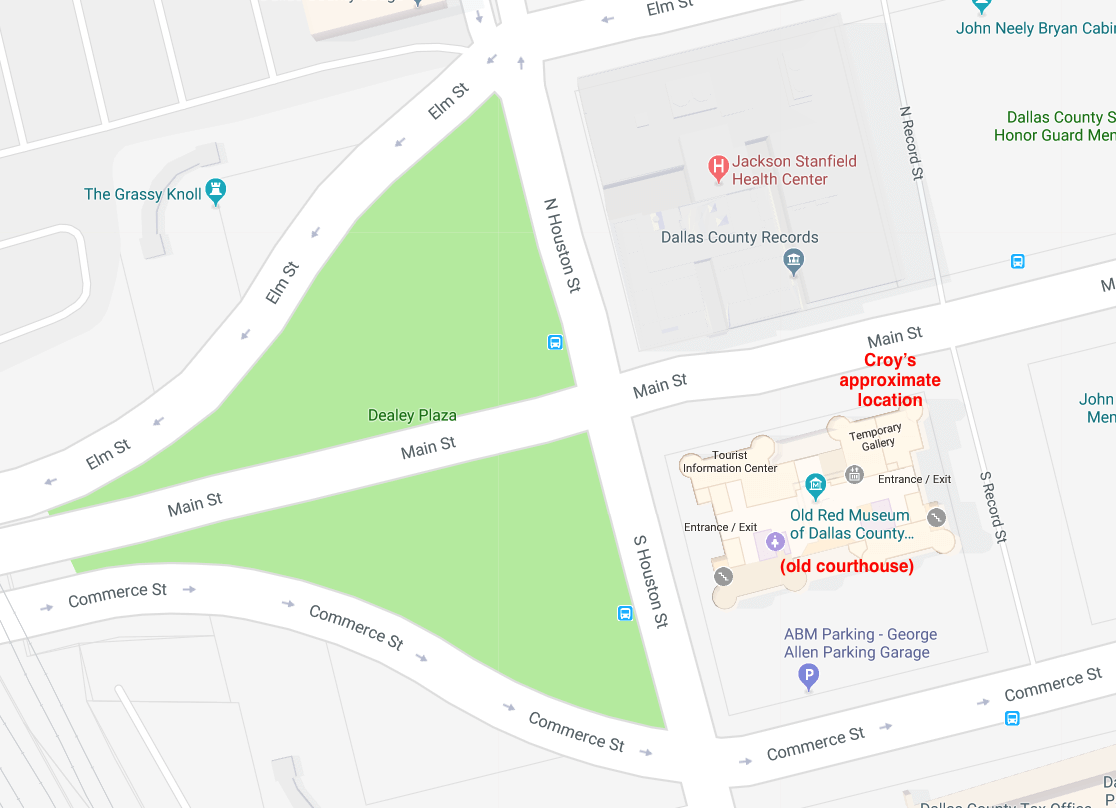 |
| Approximate location of Croy when he and his estranged wife arranged to meet for lunch after the assassination. If this really happened, it would make for a good SNL skit. |
Croy now added something even more puzzling. He said that before going to the diner, he intended to go to his parents’ house to change his clothes. Presumably, this was when he heard about the Tippit shooting. Due to his job duties, he was late for the dinner with his estranged wife. He colorfully adds that she was angry. Apparently sharing a hamburger was more important than the murder of a police officer. (This writer is not aware if Griffin ever called her to confirm this tale.)
Croy is important because when the story about the wallet finally did break, he was the policeman who was credited with first handling it. His story was that he was handed the wallet by a civilian. Of course, Croy never asked the name of this witness. (See again Simpich, “Who Found Oswald’s Wallet”)
Considering his modus operandi that day, it was as if Croy were operating in a fog. To show how thick the fog was, Croy once told one researcher that he did not examine the contents of the wallet. He then told another researcher that there were seven different ID’s in it and none were Oswald’s. (See part 2 of Hasan Gokay Yusuf's review of Myers’ book)
With a hapless performance such as his, whether that fog was designed or accidental is a natural question to pose.
VI
With the new evidence arrayed as it is above, the question most objective observers would ask is: What would have happened if you had a real investigation in the Tippit case instead of the somnolent Warren Commission? To show the difference that would have made, consider a speech that former HSCA Deputy Counsel Robert Tanenbaum made in Chicago in 1993. Tanenbaum was an experienced prosecutor who rose to Chief of Homicide in New York City. He never lost a murder case. After listening to a highly sophisticated and complex debate over the medical evidence, Tanenbaum stepped to the podium and said words to the effect: I like to get down to basics. My opening question for an investigation would be: Why did Tippit stop Oswald?
Which is an interesting query. As most people know, the official story attributes a description of the alleged assassin to Dealey Plaza witness Howard Brennan. The Commission said that by his looking upward from about a hundred feet away, and through a window six stories up that he managed to convey a description of the man he saw down to his height and weight. Add in the fact the window was only partly open and as Tanenbaum said, it was not a floor to ceiling window. So how could that description be accurate? The professional prosecutor also added that if one goes with the Commission’s sniper’s nest scenario, then how could Brennan see anything but a partial view of the subject? Further, not only did Brennan not identify Oswald in the police lineup that evening; there is a serious question whether Brennan was even at the lineup. (Griggs, pp. 90-96)
Moreover, it is simply not possible to verify a chain of communication from Brennan’s alleged description of a man who was 5’ 10” and 165 pounds to the Dallas Police. The official story has Brennan giving his description to Inspector Herbert Sawyer. But Sawyer would not confirm Brennan was the man. (WC 6, pp. 322-25) Also, Brennan did not identify Sawyer. (WC 3, p. 145) Nevertheless, in the face of this, writers like Gerald Posner still insist that the description came from Brennan to Sawyer. (Posner, Case Closed, p. 248) Yet when one looks at the footnote Posner refers to, one can read that Sawyer testified that he based his broadcast description from evidence that did not make it clear whether the sniper had been on the fourth or fifth floor, or even in the building. (WC 6, p. 322) So how could this be Brennan?
The FBI spent many weeks trying to find out who the source for the description was. They gave up and J. Edgar Hoover decided to label the source as an unidentified citizen. (FBI memo of 11/12/64 from Richard Rogge.) The HSCA chose not to rely on Brennan in any way. (Summers, p. 79) But what makes the description even more odd is that it also included the information that the suspect was armed with a rifle: namely, either “a 30-30 or some type of Winchester.” (WC 6, p. 321) So why would Tippit stop someone clearly armed without calling for a back-up first? But, of course, we know that whoever shot Tippit did not likely have a rifle. So, again, why did Tippit stop the person?
This lacuna in the official story has driven the other side into overdrive. As with the tall tale of the wallet being Tippit’s, they offer a palliative explanation: that Oswald changed directions on 10th Street, and because that action looked suspicious, Tippit thus stopped the man who killed him. But as Michael Griffith has ably pointed out, to do this one must rely on witnesses who altered their testimony, plus testimony offered 14 years after the fact by a witness who saw something that no one else saw. As Griffith noted, none of the police or Secret Service initial reports found any witnesses who said this occurred. They all said the assailant was walking west, toward the patrol car, not away from it. (Michael Griffith, “Did Oswald Shoot Tippit?”)
This puzzling hole in the evidence allows for the alternative that Tippit did not pull the man over because of the radio message. If in fact Doris Holan was correct, Tippit stopped his car almost right in front of the driveway where the second police car was situated. That would leave open the suggestion that Tippit was being lured, not just out of his proper area, but onto some kind of disguised trapdoor.
At this point in our analysis, it would be appropriate to chronicle the rather strange itinerary that Tippit’s life took during its last hour. Before I begin to trace this schedule, I wish to stress that the reader will find none of the following information in the Warren Report. This tells us all we need to know about the Commission’s completeness and honesty. The source I will use for this information is Joseph McBride’s Into the Nightmare; that book is, in my view, the best compendium of information on the Tippit case today.
Between the hours of approximately noon and 12:35, Tippit was most likely on a shoplifting call and then home for lunch. (McBride, pp. 506-17) At approximately 12:40, he was seen in his car by five witnesses at a GLOCO filling station. Interviewed by author William Turner, the witnesses said Tippit appeared to be watching the Houston viaduct, which crosses over from Dealey Plaza. That viaduct connects to the Kennedy crime scene within ninety seconds. (McBride, p. 441) We should recall that, at about this time, the order came on the radio: “Move into Central Oak Cliff area.” Yet, according to five credible witnesses, that was not really what Tippit was doing.
Another piece of the millennium’s new evidence now enters the equation. Just a few moments after this, Tippit pulled over a car driven by insurance agent James Andrews. Andrews told a Dallas researcher that Tippit drove in front of him and cut him off on the 300 block of West Tenth. Tippit jumped out of his car, walked forward and inspected the space between the front and back seat. Perplexed, Andrews looked at the officer’s nameplate. Without saying anything, Tippit got back in his car and drove away. Andrews commented that Tippit “seemed to be very upset and agitated and acted wild” (McBride, p. 448)
Tippit was next reported at the Top Ten Records store at 338 West Jefferson Boulevard. Two witnesses, Dub Stark and Louis Cortinas, saw him there. Cortinas said that Tippit was in a hurry and asked people to move aside. Tippit, whom he knew fairly well, then commandeered the phone, called someone, and apparently did not get an answer. He then hung up and walked off, looking worried or upset about something. (McBride, p. 451) At around this time, 1:00 PM, the dispatcher called Tippit and got no answer.
As McBride comments, it seems logical to assume that—unless this was the first time he ever saw the viaduct—Tippit was waiting for someone to cross over by car or bus. He then actually did stop a car, apparently to look for someone hiding in the back. Frustrated at both places, he then tried to make a phone call in order to get further directions. Finally, he proceeded to his death at 10th and Patton, driving his car very slowly, as if he were looking for someone. (WC 3, pp. 307, 324) In this new light, it is possible to see his death more fully and accurately than either Henry Hurt or Jim Garrison did.
VII
One of the most interesting parts of McBride’s book is the fact that he interviewed someone no one else did. That would be Edgar Lee Tippit, father of the patrolman. Through that long interview, McBride attained some new background information on Tippit and his family. This and other research the author performed revealed a much fuller picture of Tippit than allowed by the Commission. As Sylvia Meagher once said, the portrait drawn in the Warren Report reduces Tippit to little more than a cipher. (Meagher, p. 253) There was almost no background investigation done for the report. As Meagher pointed out, it did not even appear that they talked to his widow.
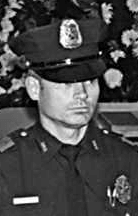 |
| William D. Mentzel |
Edgar Lee did talk to Marie Tippit. He told McBride, “They called J.D. and another policeman and said he [Oswald] was headed in that direction. The other policeman told Marie.” (McBride, p. 426) But he added something more. Marie also told him, “The other boy stopped—he would have got there but he had a little accident, a wreck. They both started but J. D. made it. He’d been expecting something. The police notified them Oswald was headed that way.” (McBride, p. 427) Marie said this information was given to her by the other officer. McBride concluded that the officer who spoke to Marie was William D. Mentzel. As noted above, Mentzel was in the area already and he told the HSCA that he responded to an accident at a bit after 1:00. As we have seen, there is at least one instance where Tippit did use a phone, and as McBride notes, Mentzel also reported that he contacted the station by phone, not by his police radio.
In an interview McBride did with Gary Revel, he stated further that Wade told him that “Somebody reported to me that the police already knew who Oswald was, and they were looking for him.”
For someone to have put together the wallet Croy initially produced at the scene, the contents of which Westbrook described to Barrett, implies that some special part of the DPD had been alerted to who the patsy was earlier than the rest of the police force. After all, when Jerry Hill announced on the radio at 1:52 that Oswald had been apprehended at the theater, it was only in relation to the Tippit case, not the JFK case. (Griggs, p. 138) Because the information about the wallet did not become known until the mid-nineties, in their examinations of the Tippit case, neither Garrison nor Hurt mentioned Westbrook or Croy. (Although, to his credit, Garrison did write that it seemed probable to him that part of the Dallas police colluded in the crime before it happened: see Garrison, p. 203)
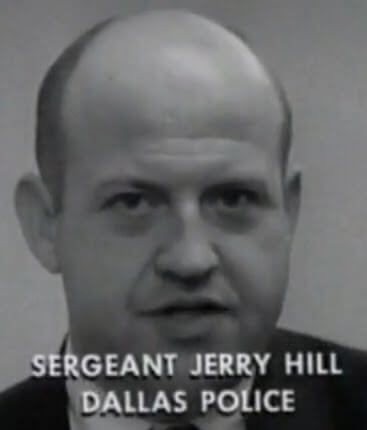 |
But both Garrison and Hurt did mention the name of officer Jerry Hill. Like Westbrook, Hill holds the distinction of being one of the very few cops who maintains he was at the three main scenes: the Depository, 10th and Patton, and the apprehension of Oswald at the Texas Theater. In addition, he was in the unmarked car that escorted Oswald to the station. If the reader recalls, Hill was the policeman who first reported from the Tippit scene that the shells fired there were from an automatic. When Henry Hurt confronted him with this discrepancy, along with the fact that, even though Hill instructed Poe to mark the shells with his initials, those markings had disappeared, Hill responded with one of the most farcical comments available in the literature. Hill said that he could not imagine any kind of evidence manipulation because the Dallas Police Department was so clean it scared him. (Hurt, p. 155)
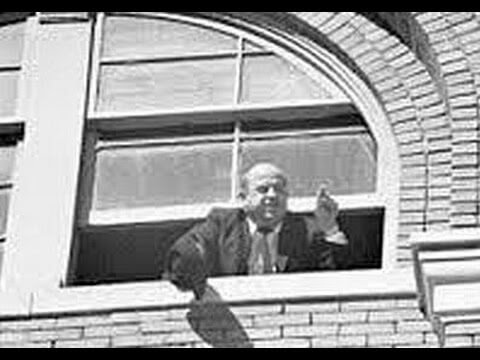 |
| Hill at the TSBD |
Surely the reader must know that statement is so contrary to the facts that it actually lends suspicion to Hill. As this author wrote in his examination of Vincent Bugliosi’s elephantine book Reclaiming History, the contrary is true:
No other county in America—and almost no state, for that matter—has freed more innocent people from prison in recent years than Dallas [Tarrant] County where Wade was DA from 1951 through 1986. (James DiEugenio, Reclaiming Parkland, p. 196)
Henry Wade, of course, was the DA who supervised the Kennedy and Tippit cases. What makes this even more deplorable is that none of this would have ever been exposed except for the power shift that took place in 2006. That year, the city elected its first African American DA in over a half century. Craig Watkins was not from the good-ole-boys network. He never worked for Wade or met him. In fact, he said of the previous regime, “There was a cowboy kind of mentality and the reality is that kind of approach is archaic, racist, elitist and arrogant.” He began a review of prior convictions. Literally dozens of innocent people were set free. In three cases, the charge was murder. As Watkins said, many of Wade’s cases “were riddled with shoddy investigations, evidence was ignored, and defense lawyers were kept in the dark.” In other words, the combination of Wade and lead detective Will Fritz made for a thoroughly corrupt local law enforcement system—in pure numbers, the worst in America at that time.
Take the following example. More than one witness said that that Tippit’s killer leaned into the police car, touching it with his hands. So the police had the car dusted for prints. The DPD said the prints were not legible. But it turned out that the HSCA discovered there were actually two sets of prints taken, and the second one was legible. Dale Myers took the prints to a reputable analyst. After comparing them to Oswald’s, he said they did not match. This was about par for the course for the DPD in defending the rights of the accused. (James DiEugenio, Reclaiming Parkland, p. 126)
And Jerry Hill knew about it; in fact, he was part of it in 1963. As stated above, Hill was a member of the police team that apprehended Oswald at the Texas Theater. In 1967, he was hired by CBS as a consultant for their four-part series on the Warren Commission. As part of his duties on that show, he did a long interview with correspondent Eddie Barker. In that interview, he said the police did a “fast frisk” on Oswald at the theater and found nothing in his pockets at the time. This poses a serious problem for both Hill and the police, because they later claimed that Oswald had five live bullets in his pockets at the station. Since Oswald was handcuffed at the theater, where did they come from? (See my “Why CBS Covered up the JFK Assassination, Part 2”)
In October of 1963, Hill went on what he called a “special assignment”. He was detailed over to the personnel division to work under Westbrook. (WC 7, p. 44) There was never any question by Commission lawyer David Belin about why this happened at that time, a notable omission in light of the fact that Westbrook already had six people working for him. (Griggs, p. 15)
According to the Warren Commission, it was Hill who had possession of the handgun taken from Oswald upon the arrival of the suspect at the police station. But as Gokay Hasan Yusuf has pointed out in his essay, “Gerald Hill and the Framing of Lee Harvey Oswald”, there is some confusion about who actually took a handgun from Oswald at the theater and when it was transferred to Hill. When Hill arrived at the station, he placed the gun in Westbrook’s office while he wrote a report. This was so odd that Westbrook himself admitted to the Commission that the gun should not have been there. (WC 7, p. 118) Concerning this point, Hill testified that he had tried to turn over the gun to Lt. T. L. Baker, but for some reason Baker did not accept it at that time. (WC 7, p. 51) It would have been nice if the Commission had asked Baker about the matter and why he did not accept the weapon, but when Baker did testify, he was only asked eight questions, none about this episode. (WC 4, p. 248)
One last point about this .38 Smith and Wesson. According to the Warren Report, that weapon was ordered by Oswald and was delivered not by the post office but by a private company called Railway Express Agency (REA). This was a forerunner of FedEx. They required certain legal restrictions on firearms delivery, specifically on small firearms, like pistols and revolvers. For instance, one had to show an ID, and an affidavit of good character. (James DiEugenio, Reclaiming Parkland, p. 128) This was to be done at the REA office in Dallas. So the procedure should have been that REA would send a card to Oswald’s post office box first. Then Oswald would pick it up and walk over to REA office. He would then show his ID and affidavit, pay for the revolver, get a receipt and the transaction would be recorded by REA.
To make a long story short, there is no proof that any of this happened. In other words, there is no paper trail that leads from the card being picked up by Oswald to the transaction being processed by REA. In fact, there is not even any proof that the FBI ever went to the REA office. The Warren Report glides over this without referring to it, leaving yet another of its innumerable lacunae. The Commission does not even ask: Why would Oswald order the weapon under an alias, namely Hidell, knowing the summons card by REA had to go to a post office box in his real name? But the bottom line is that there is no proof Oswald ever picked up the gun. So how do we know he had it?
VIII
According to Hill, while he was making out his report, Captain Westbrook told him he should change the report to say that Oswald was the suspect in not just the Tippit case, but also the murder of President Kennedy. (WC 7, p. 60) There is no trace in the transcript that the Commission lawyer batted an eyelash at that jarring disclosure, let alone asked Hill to detail the reason Westbrook told him to do that. And again, in going through Westbrook’s testimony, this author could find no cross-check on that exchange, that is, no inquiry as to whether Westbrook actually told Hill to do this, and if he did, what the reason was behind it. Hill was part of the circle of policemen who stated that Oswald somehow tried to fire a handgun at the theater. This was proven false by Cortlandt Cunningham of the FBI for the Commission. (WC 7, p. 61; McBride, p. 202) It would have been an important part of the case to have the names and interrogations of the 24 spectators in the theater at this time. But after giving the order to collect that information, Westbrook said he did not know what happened to the list. (WC 7, p. 118; Griggs, p. 137)
That afternoon, at approximately 5 PM, Hill did an interview on the radio that went national. It is important to note that Hill was an experienced print and TV journalist who, as Bill Simpich discovered, had worked the Dallas police beat out of an office at the station. (WC 7, p. 44) During this interview with Sacramento’s KCRA host Bob Whitten, Hill did about everything he could to incriminate Oswald in the public mind. This was before Oswald had been arraigned on either charge, before the FBI had linked him to the weapons, and before the Bureau had tested for fingerprints, or ballistics. Hill accused Oswald of being a violent person who may have shot another policeman previously—an accusation that he seems to have manufactured out of thin air. Hill also said that Oswald would not even admit he pulled the trigger on the gun in the theater. Which, as Cunningham showed, he did not. He then said that Oswald had admitted during interrogation he was an active communist. Hill talked about Oswald’s time in Russia, how he had defected and returned with a Russian bride. How Hill attained this (mostly false) information is unclear, as is his motive for conveying it on the air. But his story was that he got some of it from Westbrook. (WCD 1210; “Gerald Hill and the Framing of Lee Harvey Oswald”)
As most people familiar with the JFK case understand, there is usually a punch line in these kinds of mysterious and unexplained matters. In this one it is the following: Within a year of the publication of the Warren Report, Westbrook resigned the force. He then became an advisor to the security forces in Saigon. That assignment was handled through the Agency for International Development. Those who follow the JFK case know that AID often worked under the auspices of the CIA. (Gokay Hasan Yusuf, “A few Words on former DPD Captain, William Ralph Westbrook”, 9/13/14)
In light of these latter revelations, the murder of J. D. Tippit takes on a new evidentiary significance. There had been hints of what it all really meant before. As Deputy DA Bill Alexander once said to Henry Hurt: he knew that the man who killed Tippit had killed Kennedy. (Hurt, p. 157)
As Evan Marshall, a former 20-year homicide investigator, told the late Harrison Livingstone:
The Tippit shooting has always been to me a Red Herring of the first order. As someone who spent 20 years as a big city cop, I can assure you that nothing affects a cop like the murder of a brother officer. Perhaps the hope was that the officers who responded to the theater would kill him there. (Livingstone, The Radical Right and the Murder of John F. Kennedy, p. 339)
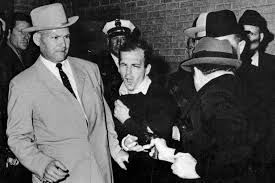 |
| Detective Jim Leavelle stares as Ruby shoots Oswald |
When Joe McBride was researching his book on the Tippit murder, Marshall’s comments were both amplified and certified by another lawman, Detective Jim Leavelle of the Dallas police. In commenting on the differences between the murder of President Kennedy and Tippit, he described the first as such:
As the old saying goes back then, “It wasn’t no different than a south Dallas nigger killin’.” When you get right down to it—because it was just another murder inside the city limits of Dallas that we would handle. It was just another murder to me. And I’ve handled hundreds of ‘em. So it wasn’t no big deal. (McBride, p. 240)
Leavelle differentiated that case from Tippit’s with the following: “What some people don’t realize is that when a police officer gets killed, that takes precedence over the shooting of the president, because that’s close to home.” (McBride, p. 241)
As I have tried to show here, this seems to be what happened. Of course, I cannot prove it beyond a reasonable doubt. Not even close to that standard. However, as Tanenbaum said in the speech referred to above, it is not the duty of private citizens to do the work that should have been done by the FBI, the Warren Commission and the HSCA. But I have little doubt that if someone like HSCA chief counsel Dick Sprague had been running the Warren Commission, and he had this information, he would have honed in on Westbrook, Croy and Hill like a laser. He would have moved heaven and earth to find out the source for the assassin's description which, in all likelihood, did not come from Howard Brennan. He would have been at the scene with Doris Holan, walking her through what she saw. He then would have looked for corroboration. And those witnesses would have been provided protection. He personally would have gone to both the post office and REA to try to figure out how the heck Oswald got that handgun.
That, and much more, would have all been part of what a real investigation of the Tippit case would have been like. None of that is in the same universe with what really happened. And as a result, the people who really arranged for and killed Tippit succeeded tactically in a spectacular way. For within about 30 minutes after the ambulance carted Tippit’s body away, more than a half-dozen police cars descended on the Texas Theater in response to a reported infraction—the infraction being that some unknown person had gone into the theater without paying. That was enough to lower the noose around Oswald’s neck. Once apprehended and handcuffed, Westbrook ordered the arresting officers to get Oswald in the car and take him to the station. (Griggs, p. 138) At 1:52, under Radio Call Sign 550-2, Jerry Hill made the announcement that they had their man in the murder of officer Tippit. As we have seen, Westbrook—the man who would soon be working with the CIA—then told Hill to add President Kennedy as the other victim.


